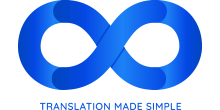
Continuous Localization? - With new models of projects, how does XTRF work?
We have a few clients that seem to be moving to a model of continuous localization where we are getting frequent content with lots of small updates. We haven't really thought much about that until we saw this article on slator - https://slator.com/whys-and-hows-of-continuous-localization/?mc_cid=a38cf914b9&mc_eid=0282270890 - where we started to think that if clients are moving toward more frequent small updates, XTRF isn't well optimized. Or at least we're not using XTRF is a way that is optimized for this type of work.
I just want to know if @XTRF or any users out there have given a thought to client work that is more focused on high frequency, high touch, low volume work and how to best use XTRF in these cases?
Thanks so much!
Customer support service by UserEcho


Mark, I hope you don't mind me pitching, but this is exactly what called BeLazy to life. XTRF is not optimized for this scenario, as every BMS is optimized for flexibility rather than speed of data entry, given that you can quite easily use two CAT tools, but it's hard to use different systems for project and vendor administration. Continuous is a catch word and a trap - it's only continuous if it's continuous for the entire supply chain. So the idea for us was to build an intelligent "project router" that handles multiple project flows from various TMSes and also vendor portals (XTRF's own included), and with the right rule-based configuration it sets up a project that benefits from all the automation capabilities of XTRF. Here is a link: https://xtrf.eu/product/belazy-integration-with-xtrf/
I'll look into this. Thanks for sharing.
And of course, always open to what others are doing. Thanks!
I have worked with several continuous localization projects. My method was to create a project where I included full description of the work process and assigned jobs to vendors as needed. No receivables and payables in this project. It may be a weekly, monthly, yearly project.
For financials, I created completely new projects, with receivables and payables, covering the time period I have the client purchase order for. Carefully thought of project naming conventions so that I can track if nothing's skipped.
Yes, it might feel like a workaround. It works if the translation does not happen in offline files and there is some sort of dashboard in the environment where the translation happens (for workload planning). Also, it must be possible to retrieve the wordcounts actually processed by a certain user during a certain period of time - for financials.
If the continuous localization happens in offline files and for POs their volumes are summed up, then I have not found any other way than to register each handoff; in some cases it is possible to combine something into one task / job, in some cases not.